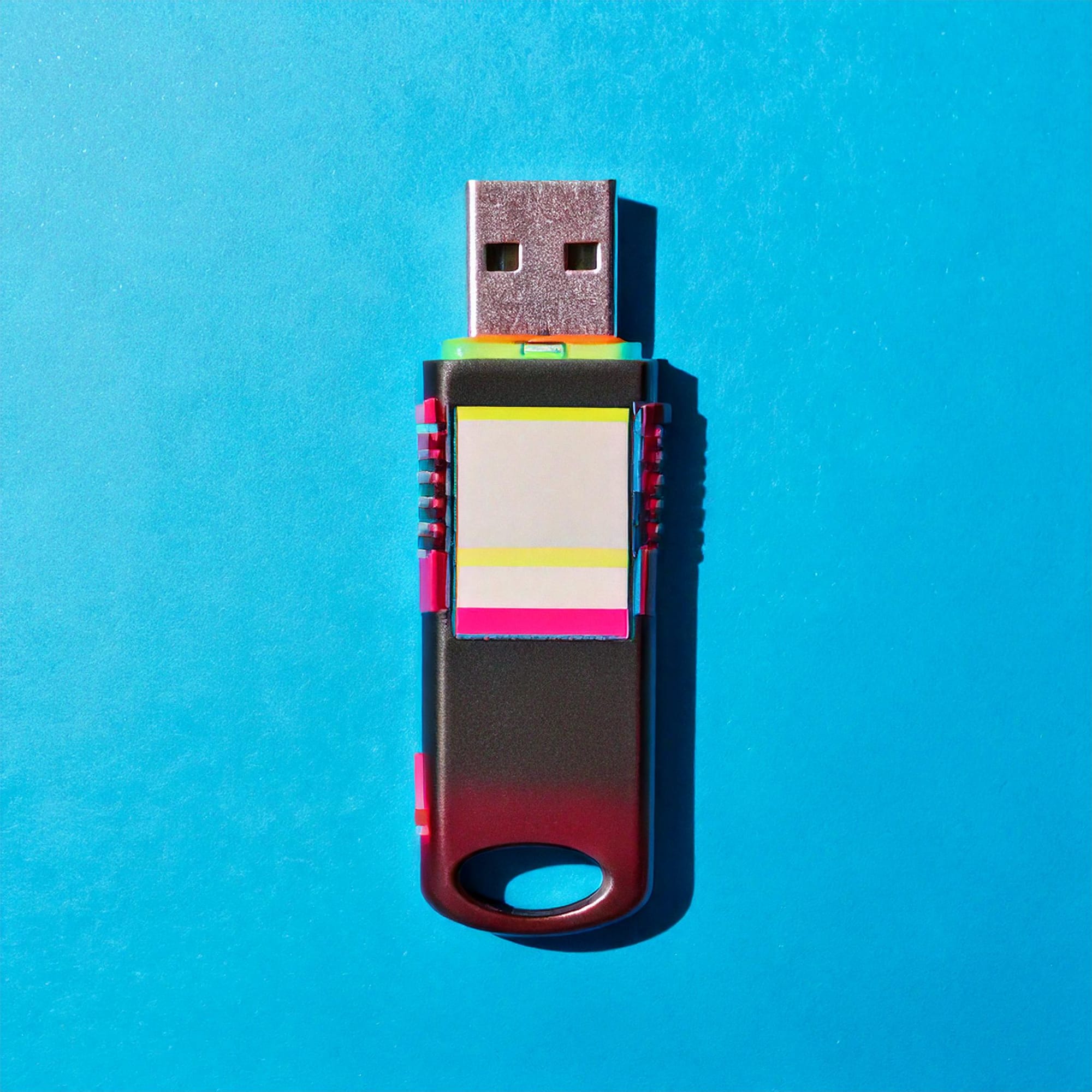Humanity’s footprint is increasingly digital due to exponential technological growth. From emails and social media posts to virtual galleries and digital archives, our collective history and identity are encoded into bits and bytes scattered across servers, hard drives, and the cloud. With this ongoing shift from physical to digital records and artifacts, digital decay is a real concern. The impermanence of digital data and the potential loss of humanity’s digital legacy raise critical questions about safeguarding our culture, knowledge, and memories for future generations.
The Fragility of the Digital World
Unlike the physical artifacts of history—manuscripts, paintings, or stone monuments—digital creations are not inherently durable. Files can be corrupted, software can become obsolete, and platforms can shut down with little to no notice. Digital decay is the gradual degradation or loss of digital content due to factors such as hardware failure, software incompatibility, or technological obsolescence.
According to a recent study by the Pew Research Center, as of October 2023, a quarter of all web pages that existed between 2013 and 2023 are no longer accessible. The study also found that roughly 20% of government websites contain at least one broken link, and 54% of Wikipedia articles have a broken link in their references section, meaning the necessary evidence substantiating the information contained in the online encyclopedia is essentially decomposing.
The lifespan of digital media is alarmingly short. For instance, hard drives have an average lifespan of five to ten years, and optical discs degrade within two decades. File formats and software systems evolve rapidly, making older formats unreadable. The JPEGs and MP3s we create today may be unreadable in 50 years unless we actively preserve them. This fragility underscores a critical (possibly poetic) paradox: while digital technology enables us to create and share at unprecedented scales, it also threatens the longevity of what we create.

Humanity’s Digital Legacy
Humanity’s digital footprint is vast and multifaceted. Governments digitize public records, libraries scan historical manuscripts, and individuals archive their lives in photo albums and social media timelines. Yet, the permanence of this digital legacy is far from guaranteed.
Take, for example, the case of Geocities, one of the first major web hosting services recognized by historians as a significant chapter in the early years of the internet. At its peak, it hosted millions of personal websites, each uniquely reflecting early internet culture. In 2009, Geocities was shut down, and all of its hosted content was deleted. Without the efforts of archivists, digital historians, and projects like the Wayback Machine by Internet Archive, a significant piece of Internet history would have been lost forever.
The same risk applies to personal archives. Families often rely on digital platforms like Google Photos or social media sites to store memories, assuming these services will last forever. But platforms can close, and data policies can change, leaving personal histories vulnerable to erasure.
Latency: A Hidden Threat
Beyond outright decay, latency poses another threat to our digital legacy. Latency refers to the delayed accessibility or usability of data due to poor organization, lack of proper metadata, or reliance on outdated systems. Imagine discovering a collection of digital photos from a decade ago but lacking the software to open the files or the context to understand their significance. This issue becomes particularly acute for institutions like libraries, museums, and research organizations tasked with preserving humanity’s cultural and intellectual heritage. Without proper metadata and curation, digital archives risk becoming unsearchable, rendering valuable data effectively useless.
The Role of Digital Preservation
A number of organizations, including the Internet Archive, as mentioned previously, the Digital Preservation Coalition, the US Library of Congress, and the United Nations, are undertaking proactive efforts in digital preservation to safeguard digital content to ensure its longevity and accessibility. This is done through a combination of technical, organizational, and philosophical strategies to combat decay and latency.
Key strategies for digital preservation include:
1. File Migration: Regularly transferring data to updated formats and systems to prevent obsolescence.
2. Redundancy: Maintaining multiple copies of data across diverse storage systems to guard against loss.
3. Metadata Management: Providing detailed context for digital files to ensure they remain meaningful.
4. Open Standards: Using open-source file formats and tools that are less likely to become obsolete.
5. Emulation: Creating software that mimics older systems to access legacy files and programs.
While institutions play a critical role, we also bear responsibility for preserving our own digital legacies. Personal data—photos, videos, writings, and other creations—constitutes a significant part of humanity’s collective story. To protect our data, we can back up regularly using multiple storage options, such as external hard drives and cloud services; choose stable formats, saving important files in widely supported and durable formats like TIFF for images and PDF/A for documents; organize metadata to include descriptions, dates, and tags to files to provide context for future use; and finally migrating periodically, transferring data to new storage devices and formats as technology evolves.

Ethical Considerations
Preserving our digital footprint in the face of digital decay also raises ethical questions. What should we prioritize for preservation, and who decides? What happens to digital artifacts with controversial or harmful content? The internet has amplified marginalized voices and democratized access to information, but not all digital creations are valued equally. Corporate, political, or cultural biases often shape what gets preserved. Additionally, the sheer volume of digital content makes it impossible to save everything, forcing archivists to make difficult choices. Digital colonialism is an important, nay critical to discussions of preservation. Much of the digital preservation infrastructure is controlled by Western corporations and institutions, raising concerns about whose stories and cultures are prioritized in the global digital archive.
The Promise of Emerging Technologies
Emerging technologies offer hope in the fight against digital decay. For example, advancements in quantum storage and DNA data storage promise to extend the lifespan of digital archives exponentially. Meanwhile, blockchain technology offers decentralized solutions for verifying and preserving digital records. AI and machine learning also play a role by automating the organization and retrieval of vast digital collections, reducing the risk of latency. However, these technologies are not panaceas; they must be deployed thoughtfully to avoid creating new vulnerabilities or ethical dilemmas.
Preserving Humanity in a Digital Future
Digital decay is not merely a technical problem—it is a cultural and existential challenge. How we choose to address it reflects our values and priorities as a society. Will we invest in preserving our digital creations, or will we allow the ephemeral nature of technology to erode our shared history?
To ensure a future where humanity’s digital legacy endures, we must adopt a multi-faceted approach:
- Education: Raise awareness about digital decay and the importance of digital preservation.
- Policy: Advocate for public policies that support preservation efforts and protect digital rights.
- Collaboration: Foster partnerships between governments, institutions, and individuals to share resources and expertise.
The question is not just whether we can preserve humanity in the face of digital decay but whether we will choose to. In the battle between legacy and latency, our collective effort will determine whether the stories we tell today remain accessible and meaningful for future generations.
Digital decay threatens not only our data but also the very essence of our humanity—our memories, cultures, and shared experiences. Preserving humanity in this context requires intentionality, innovation, and collaboration. By addressing digital decay and latency head-on, we can ensure that our digital footprints endure as a testament to the richness and diversity of human life. In doing so, we transform the transient into the timeless and safeguard the essence of who we are for the ages to come.





